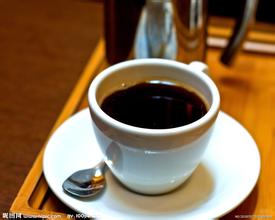Description of Flavor of Rosa Coffee introduction of Fine Coffee beans in producing area
In 1931, it was exported from Geisha Mountain in southwest Ethiopia to Kenya, Tanzania and Costa Rica. In the 1960s, it was transplanted to Panama. After nearly half a century, it was amazing. It defeated the ever-winning varieties such as Boben, Kadulla, Kaduai and Tibika, and won the first prize in the 2005, 2006 and 2007 Panama National Treasure Bean Cup. In 2007, the International Famous Bean Cup sponsored by the American Fine Coffee Association (SCAA) won the championship again, and the bidding price was sold at 130 US dollars per pound, setting a record for the highest price in the history of competition beans. It is reported that the subsequent Panama National Treasure Bean Competition will be divided into two groups: Rose Summer and Non-Rose Summer, so as not to be robbed of the glory of other varieties by Rose Summer. Guixia is a member of the Tibika family, but after leaving Ethiopia for more than 70 years, he has become famous. Moreover, Ethiopia is a treasure trove of Arabica genes. Any donation of a variety abroad is enough to make waves in the coffee market.
Guisha is cultivated in many parts of the world and is the new king of fine coffee. Panama, Guatemala, Colombia and other Latin American countries have higher quality and high price.
Floral, tropical fruit, intense sweetness; these are the feelings that rose summer has always brought us. Properly baked, they make you feel like sipping the fragrance of a bouquet of flowers. In case you haven't heard the story, Rose Summer is an ancient native from Ethiopia that was brought into Costa Rica as a coffee sample and distributed to several small farms for small-scale trials.
Not much attention was paid to the rose until the Esmeralda estate in Panama separated it from the rest and won the national coffee championship.
She's so extraordinary, fruity and floral, it's like a Yega Shefi from Ethiopia, Africa, halfway around the world. Of course, that's old news now. Some small farms have also been planted, and eager to grow their own rose-summer coffee beans have a very beautiful blue-green, jade-like warm texture, smell of fresh grass, peach, berry flavor and most coffee beans do not have the characteristic creamy sweetness of oolong tea, it seems that aroma and taste are very important to associate, but the light tea smell is obvious to us [1].
In order to highlight the characteristics and aroma of this bean, the roasting degree is close to the second explosion. The roasting degree is close to the second explosion and the second explosion is more commonly used. This can give full play to the characteristics of the bean itself. Too shallow will give off miscellaneous flavor, too deep will lose flower aroma and fruit acid. Of course, this should also be adjusted according to the characteristics of the coffee bean and the understanding of the roaster for the bean itself.

Important Notice :
前街咖啡 FrontStreet Coffee has moved to new addredd:
FrontStreet Coffee Address: 315,Donghua East Road,GuangZhou
Tel:020 38364473
- Prev

Description of Ethiopian Coffee Flavor with soft Fruit Acid an introduction to the characteristics of the varieties in the producing area
60% of the coffee belongs to forest-semi-forest coffee. In such a wild coffee forest, pesticides are not used at all, but biological methods are used to control pests. 35% of the coffee is courtyard coffee. In this kind of coffee garden, the planting is three-dimensional. Coffee is located in the lower layer and gets a suitable growth environment in the shade of other crops. Fertilizers are mainly fallen leaves, withered grass and animal manure. five
- Next

Introduction of Bolivian Coffee Flavor description, Grinding degree, Variety characteristics, Price and taste
In 1932, the Chaco War broke out between Bolivia and Paraguay for oil resources in the North Chaco region. Bolivia was defeated and lost a large area of territory. The people's armed uprising broke out in April 1952, and Paisdensolo, leader of the nationalist revolutionary movement, became president. Since then, there have been frequent military coups and long-term political instability. Modern assets with South American characteristics were restored in October 1983
Related
- Detailed explanation of Jadeite planting Land in Panamanian Jadeite Manor introduction to the grading system of Jadeite competitive bidding, Red bid, Green bid and Rose Summer
- Story of Coffee planting in Brenka region of Costa Rica Stonehenge Manor anaerobic heavy honey treatment of flavor mouth
- What's on the barrel of Blue Mountain Coffee beans?
- Can American coffee also pull flowers? How to use hot American style to pull out a good-looking pattern?
- Can you make a cold extract with coffee beans? What is the right proportion for cold-extracted coffee formula?
- Indonesian PWN Gold Mandrine Coffee Origin Features Flavor How to Chong? Mandolin coffee is American.
- A brief introduction to the flavor characteristics of Brazilian yellow bourbon coffee beans
- What is the effect of different water quality on the flavor of cold-extracted coffee? What kind of water is best for brewing coffee?
- Why do you think of Rose Summer whenever you mention Panamanian coffee?
- Introduction to the characteristics of authentic blue mountain coffee bean producing areas? What is the CIB Coffee Authority in Jamaica?

